Features of brick fireplaces and their masonry
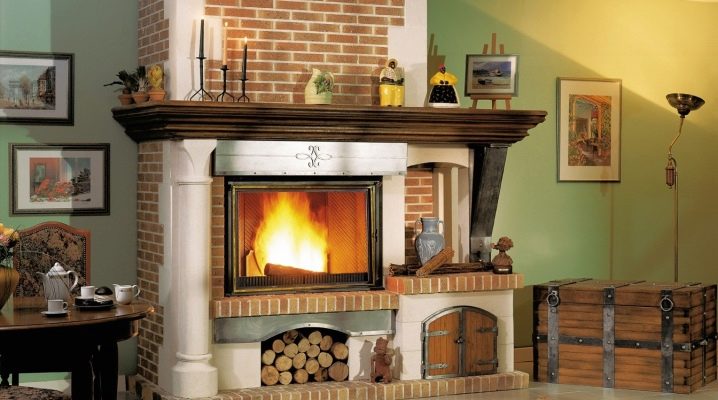
Fireplaces create a unique atmosphere of comfort and warmth in the room.
A few decades ago, their owners could be wealthy foreigners or very wealthy compatriots. In recent years, such an attractive and extraordinary element of the interior has appeared in dachas, in private houses and apartments of ordinary citizens.

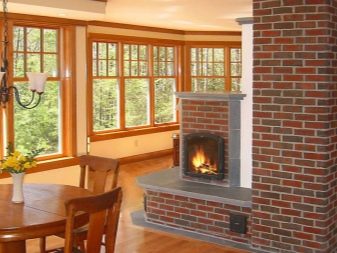
Peculiarities
The Russian stove has always been an indispensable attribute in a residential building. Later it was replaced by brick fireplaces. At first glance, it may seem that there is no difference between them, but in fact these are devices that have significant differences in performance (each of them has its own advantages and disadvantages).
A stove is a structure that serves to heat the entire area of the room. The fire in the stove is covered with a shutter. The chimney is folded according to a special technology. This prevents carbon monoxide from accumulating in the room and contributes to a higher heat transfer from stoves in comparison with fireplaces. The air supply to the stove is controlled by a blower, which is not in the design of the fireplace. It also provides fuel economy.
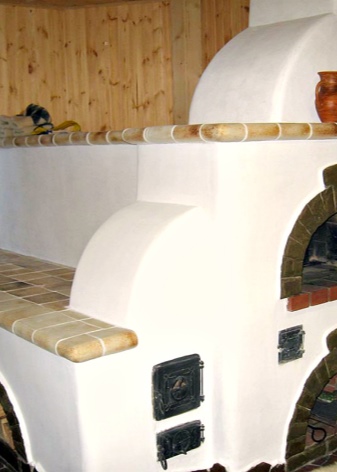
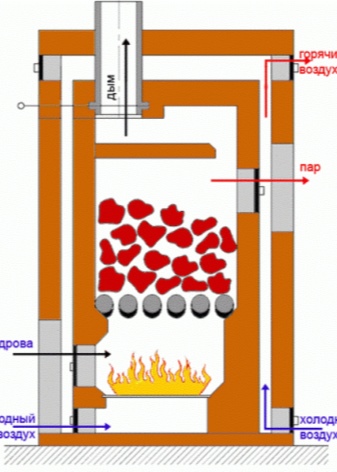
The fireplace does not provide heat in large quantities, as is possible with the use of a stove. It takes much more time to melt and warm up the stove, but a preheated stove evenly heats the entire room and the heat in the house remains for 10-15 hours.
A fireplace is a unit that has a more simplified design than a stove. He has an open hearth and a chimney is concentrated above it. By its design, the fireplace ventilates warm air more than heats it. A firebox is located in the wall or in the adjacent territory. A door or flap is not provided, but an open large opening is made instead. Through it, the rays of heat fall on people warming themselves by the fireplace.
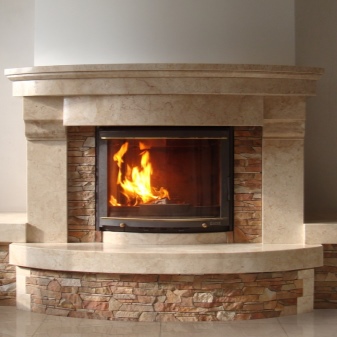
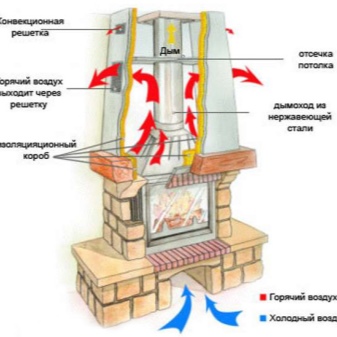
Good draft through the chimney provides oxygen access to the room. Air supports the combustion of the fuel. The smoke collector is designed in such a way that smoke from the firebox immediately enters the chimney without lingering in the room.
To prevent smoke from accumulating in the room, the chimney is made with a large diameter. A fireplace, unlike a stove, can be quickly heated, but it is necessary to constantly put wood in the fire to keep it warm.
The space that is heated with it is the place right in front of the firebox. Unlike a stove, a fireplace uses much more fuel.
Heat enters the room immediately after the fireplace is flooded.
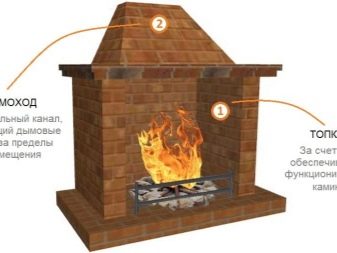

This device is most often installed to create an attractive and unusual atmosphere in the home. The romantic atmosphere in the room with the flickering fire in the firebox is conducive to liberation and relaxation.
When people do not live in the house, but visit from time to time, the use of a fireplace is best suited for such cases.
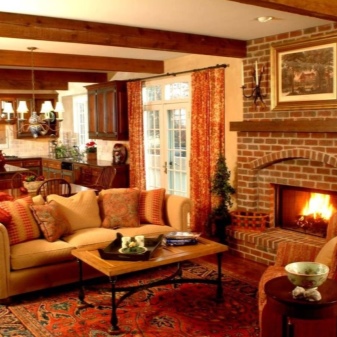
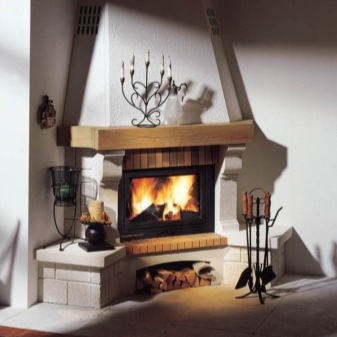
Views
Brick fireplaces include three main parts. This is a portal, chimney and firebox.
The firebox is a niche for making a fire. The portal is the outer part of the fireplace, which is decorated with various materials (stone, molding, wood, and others). The device through which smoke escapes from the room is called a chimney.
Fireplace structures are distinguished by the method of their construction - they are open, closed and half-open. When the firebox and chimney of a brick fireplace are not separated from the wall of the room, but built into it, then the heating device is called closed.
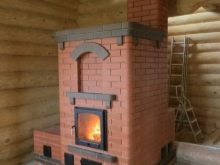
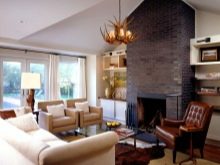
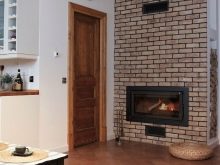
The chimney and firebox are made recessed into the wall of the room. They are also called closed (English) designs. Their advantage is size. They are compact and can be installed in very small rooms.
However, walls in buildings where a fireplace is planned must be made thicker, since their strength decreases.
They are erected immediately with the construction of the building. Their design is initially taken into account in the general design documentation for the residential complex.
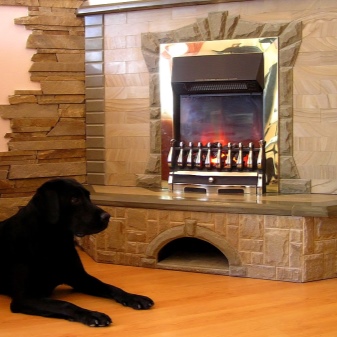
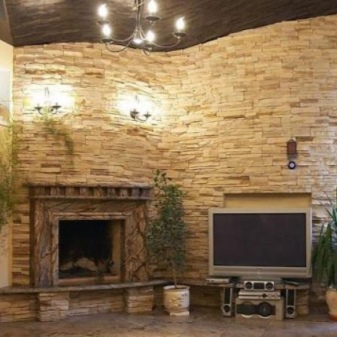
A structure laid out along the wall and adjacent to it is called a wall or semi-open fireplace. In such structures, the firebox and chimney are not built into the wall. The construction of a semi-open fireplace is possible in a room that was built a long time ago. Its redevelopment will not be required in this case. A wall-mounted fireplace is considered the most common type. It can be the same size, full length, or taper at the top. It is not connected in any way with the structure of the wall itself.
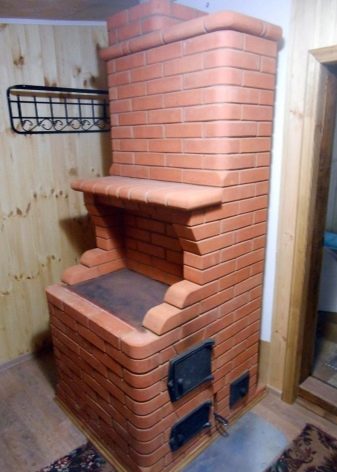
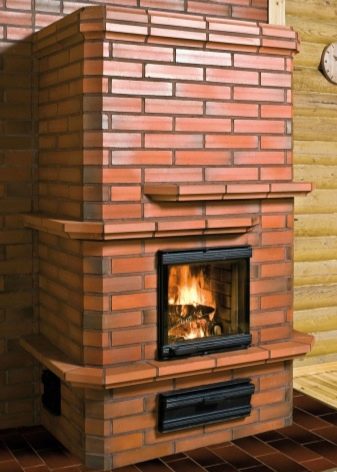
Fireplace devices located at a distance from the walls of the room are called open (island). They are one of the most unpopular species. The installation of such structures is welcomed in large rooms, because they take up most of the space of the room where they are installed with their area. Island (open) structures do not touch the wall, the flame can be seen from anywhere in the room.
Corner fireplaces are located in the corner of the premises, hence their name. With their help, empty corners of rooms are conveniently used, adjacent rooms are heated.
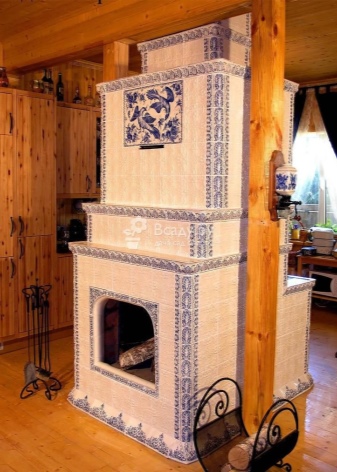
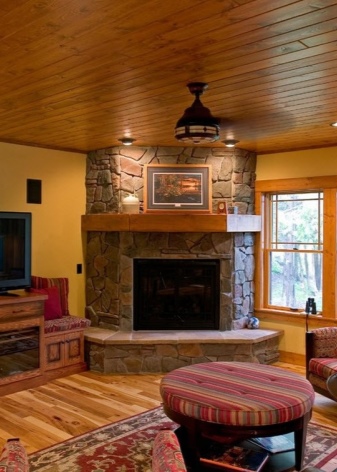
The chimney of the corner fireplaces is concentrated in the wall of the room. It is impossible to lay it out with a hollow brick. The open part of the smoke chamber is made of metal. It can be made of iron or concrete. The surface is covered with bricks, stones, plastered.
Fireplaces in which the flame is not fenced off from the common room are called open-hearth designs. The firebox is made of fireclay bricks. It can also be an iron or cast iron opening.
A decorative lattice serves as a barrier (barrier).
The efficiency of such structures is low and they serve more as a decoration than as a heating device.
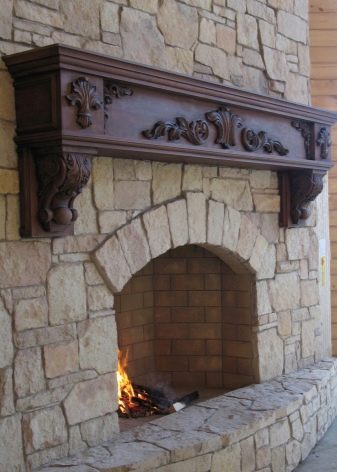
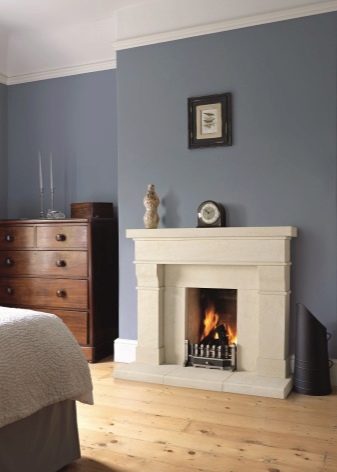
Closed fireplaces, on the contrary, are equipped with heat-resistant glass (glass door). It is concentrated between the firebox and the room. At the bottom of the closed firebox, there is an additional chamber for the ash pan. From it, air is supplied to the chamber where combustion takes place. On the furnaces of this type of fireplaces, a mechanism is installed that allows you to control the damper. All the nuances of the structure and functioning of the fireplace are skillfully hidden under the cladding. It is made of stone, decorative bricks, tiles. There may be wooden frames.
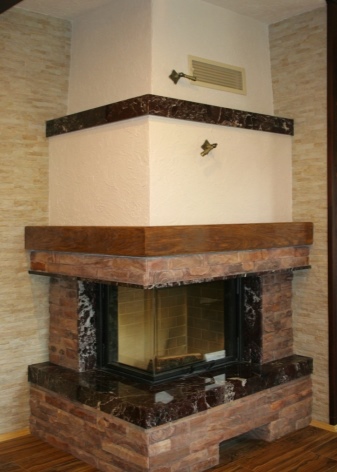
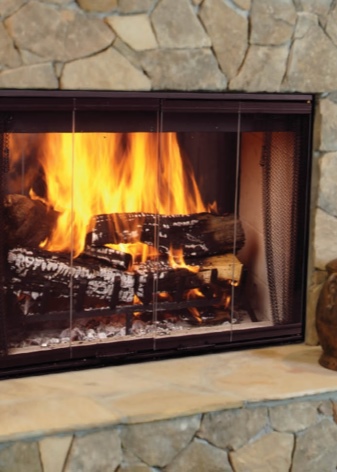
Wood-burning brick fireplaces are widely used for installing them in summer cottages. The function performed by them is cooking and heating with a water circuit.
Such units are lower in cost than stationary ones. The fuel consumption of fireplaces with stove elements is high. However, their advantage lies in the ability to use thermal energy independently of external carriers. For example, electric boilers often do not function due to problems in supplying electricity to summer cottages. Also, there is no need to supply gas communications (in the case of a gas boiler).
The fireplace stove can be equipped with an oven, which makes it possible to cook dishes using the same technologies as in Russian stoves.
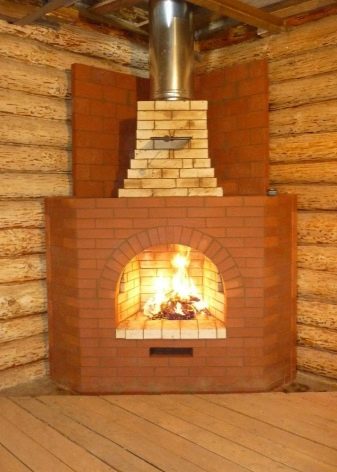
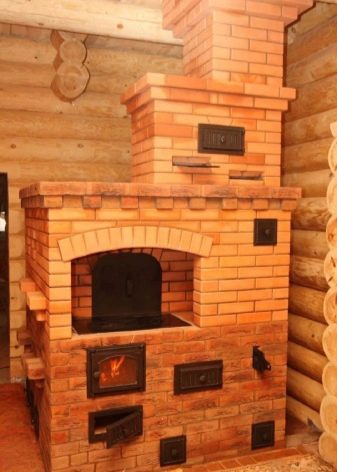
Stove - a fireplace for a bath is equipped with a tank for heating water. Tanks vary in size and model. The presence of a closed or open portal distinguishes bath structures from other types. Brick fireplaces for baths heat up the room very quickly, the heat remains for a long time. In the country, you can attach a barbecue to a brick fireplace.
The installation of wood-burning brick fireplaces requires a thorough engineering analysis. Particular attention is paid to the location of the chimney.
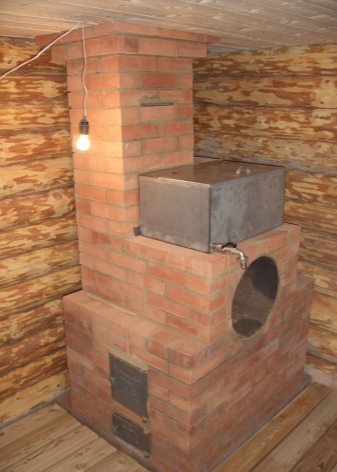

Style and design
The fireplace in the house is like a hearth. He always symbolized peace, comfort.Therefore, the space near the fire became a favorite place for the whole family.
For a long time, nobles and rich people tried to emphasize the importance of the fireplace. They tried to decorate its facade with precious metals and stones. Over time, styles and designs of fireplaces have emerged. Depending on the design of the heating device, its dimensions, the material for the masonry is also chosen. The cladding is made with red bricks or refractory white bricks are used.
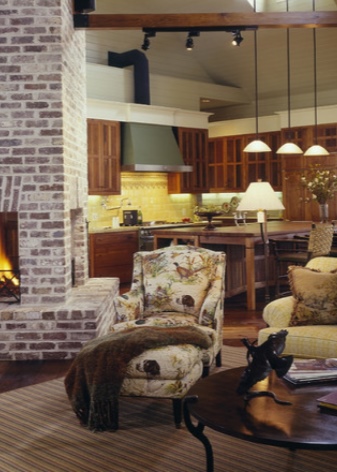
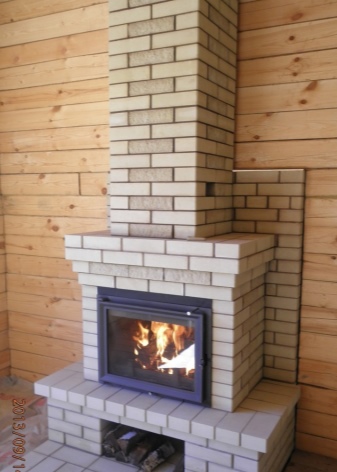
You can cover the fireplace with a decorative stone. In the room where it is located, design plays an important role. The style of the interior will also depend on how all the decor elements are combined with each other (furniture, curtains, tapestries, carpets, vases and other accessories).
There are several architectural styles of fireplaces. The most famous of them are the following: country and Russian, baroque (rococo) and classicism, empire and modern, hi-tech.
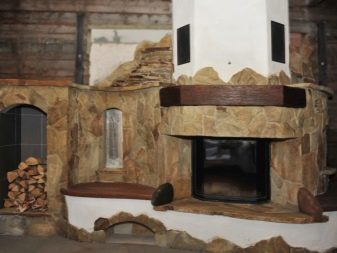
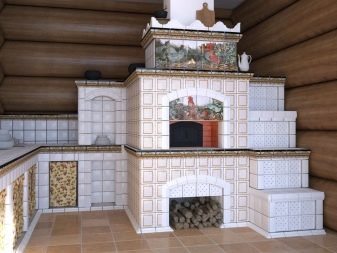
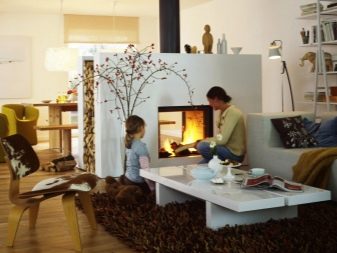

The classicism style is characterized by very strict forms and symmetry of lines. The design of the fireplace for the living room should be noble. Painting is often used for decoration. The ensemble is often complemented by gentle pastoral figurines. A marble fireplace looks very nice. The appropriate decor elements are selected for it. Pictures are placed nearby or stucco moldings with complex relief ornaments are made. Available in bronze or gold finish.
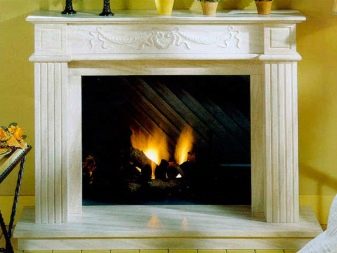
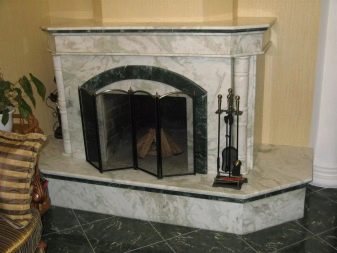
Country style fireplaces are the exact opposite of classic designs. Country or "rustic" in translation means rough or chipped. Fireplaces are made from natural materials (rough stones or wood). The feeling of being in touch with wildlife comes when looking at an open fireplace. This style is suitable for lovers of natural stone.
Baroque style (Rococo, Renaissance) reflects lush forms. Fireplaces in this style are laid low, covered with marble tiles. Usually, the room where the fireplace is located is decorated with paintings in expensive frames, and they also use heavy falling curtains and inlaid cornices. Often a mirror in a carved frame is hung over the fireplace.
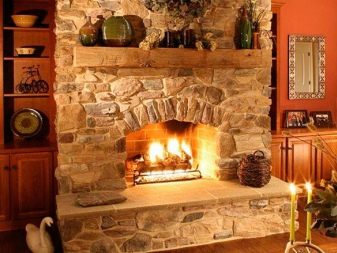
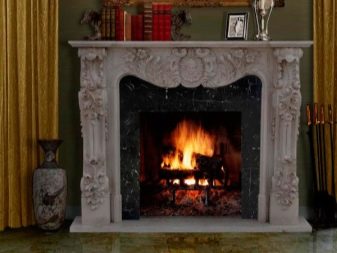
At the end of the 18th century, the Empire style appeared. He belongs to the royal type. Its main characteristic is predominance over everything. Design objects are distinguished by the monumentality of their forms. Furniture is selected with expensive upholstery, large mirrors are hung on the walls. Fireplaces are decorated with sphinxes, lion heads. Strict symmetry in everything distinguishes the Empire from other styles.
Art Nouveau fireplaces are laid slightly elongated. The decor reflects the freshness of ideas and images. Stone and metal are combined into one ensemble. The firebox is made round or given a new unusual shape. Such a fireplace is completely individual and becomes the center of attraction in the home.
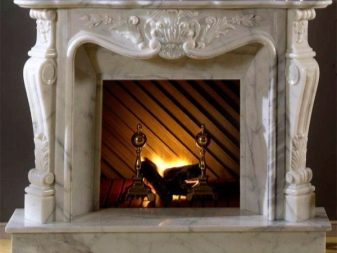
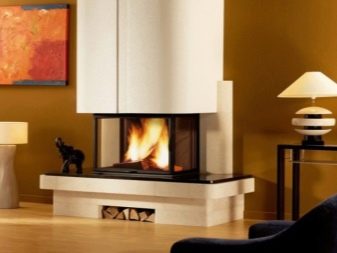
Hi-tech expresses maximalism in the use of space. Furniture with metal and glass inserts is usually concentrated around the fireplace. The decor is distinguished by its restrained form. This style is considered cold and discreet. Fireplaces are decorated with materials such as granite, marble. They also use ceramic tiles.
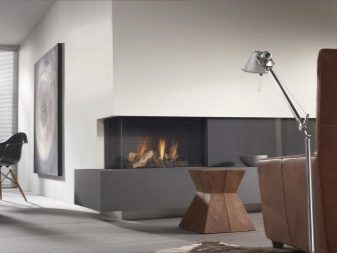
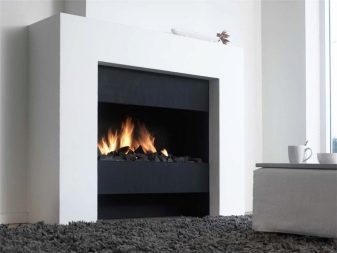
The Russian style implies the use of tiles as decoration for a fireplace. Such structures are extraordinarily beautiful, since the tiles have different shapes and colors. When the fireplace is flooded, a void remains between the brick and the tiled surface using the masonry technology. Fill it in the process of installation with sand or crushed stone from bricks. As a result of heating, this material gives off heat for a long time. The voids balance the heating temperature of the tile and brick, due to this, fireplaces are not subject to destruction and can serve for many years.
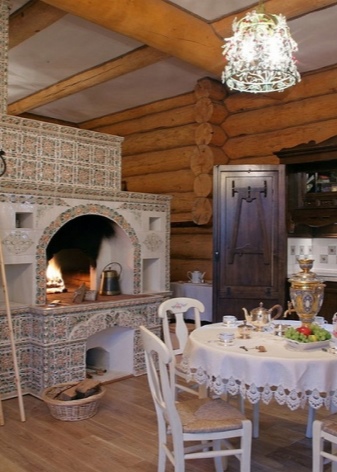
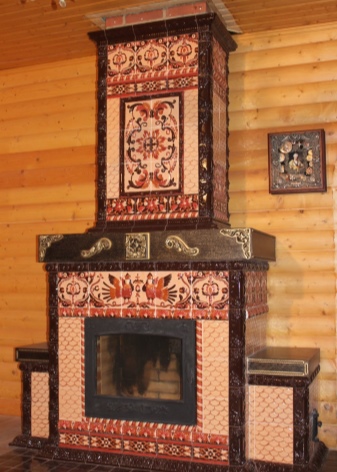
Drawings and diagrams
The most common type is considered to be a corner fireplace. It fits organically into the space of even a small room. The chimney and its portal are in the corner, due to this, the room is not cluttered.
The firebox near the corner fireplace can be closed or open, depending on your desire.
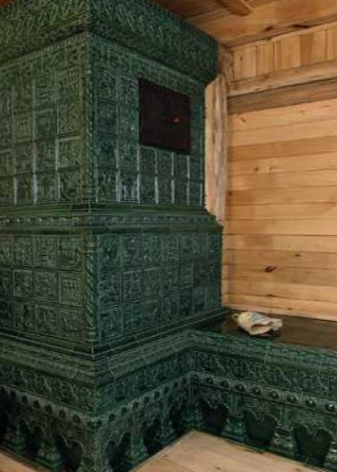
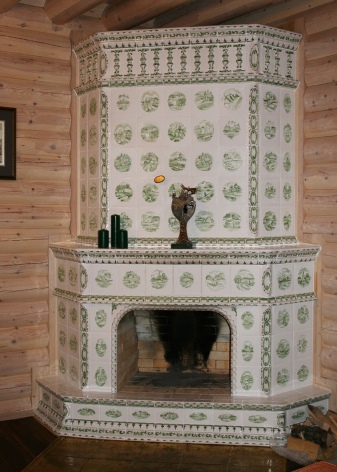
In order to fold the fireplace correctly, you first need to make drawings and diagrams as a whole structureand individual parts. Careful calculations will make it possible to avoid mistakes during masonry. First of all, you need to know the dimensions of a country house, make projects for a chimney and a furnace, and clarify what material the masonry will be made of. In the drawings, you need to display the fireplace in different projections: top view, side view, straight ahead.

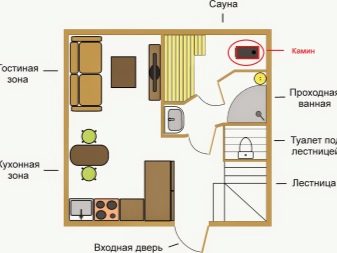
A well-built fireplace must meet the following characteristics:
- warm up the room;
- not have cracks or defects in order to avoid smoke;
- its appearance should be combined with the interior of the room.
For example, a fireplace installation is planned in a room with an area of 20 square meters with a ceiling height of 3.5 meters. The volume of the house will be 70 cubic meters (20x3.5). The ratio of the height of the fireplace and the depth of the firebox is 1/2 or 1/3. If the dimensions are not respected and the firebox of increased depth is installed, the heat in the room will decrease. When the depth is shallower, there may be smoke. Therefore, compliance with the dimensions is the main criterion for successful work.
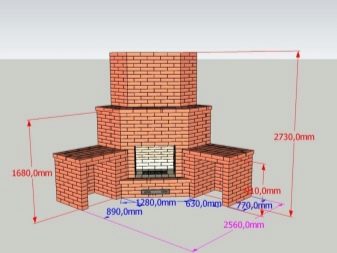
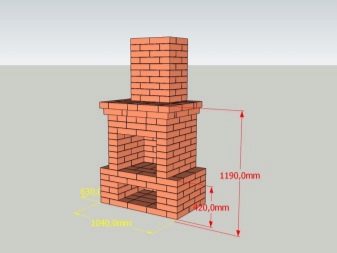
Smoke holes depend on the area of the furnace. The standard dimensions of the chimney are 14x14 cm. With the round shape of the chimney, it can be from 8 to 14 centimeters. The chimney scheme must be worked out to the smallest detail. It is best to make it out of bricks. The construction of the chimney begins with laying the foundation, then installing the order (rails) for marking the rows of masonry, then mopping is done (grouting the inner surface of the chimney), the head (upper part of the chimney) and the chimney (cap) are installed.
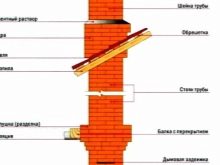
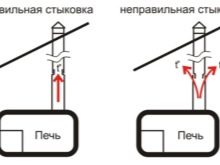
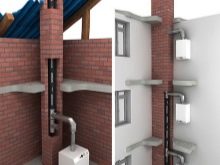
The most initial and important element in laying a fireplace is the calculation and construction of the foundation. It must be reliable and durable. We must not forget that it is impossible to make the foundation for the walls and fireplace the same. These bases should be different, since their weight load is not the same and over time the shrinkage will also be different. After the size of the foundation has been calculated, they make a plan for the fireplace at the basement level. The width of the foundation should be five to seven centimeters wider than the width of the basement row.
After the calculations, proceed directly to pouring the foundation and laying the fireplace.
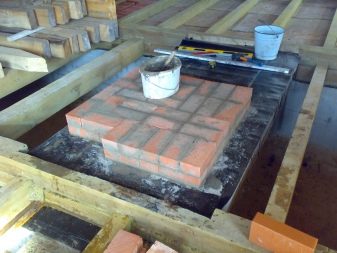
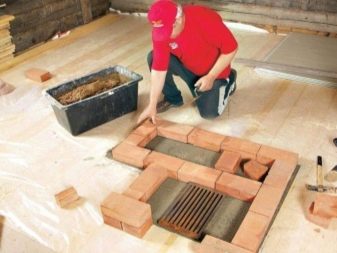
Fireplaces with a water heating circuit are very popular. To install them in suburban buildings, they resort to using welding machines.
In terms of external characteristics, such a fireplace is similar to a stove on legs with an outer exhaust pipe.
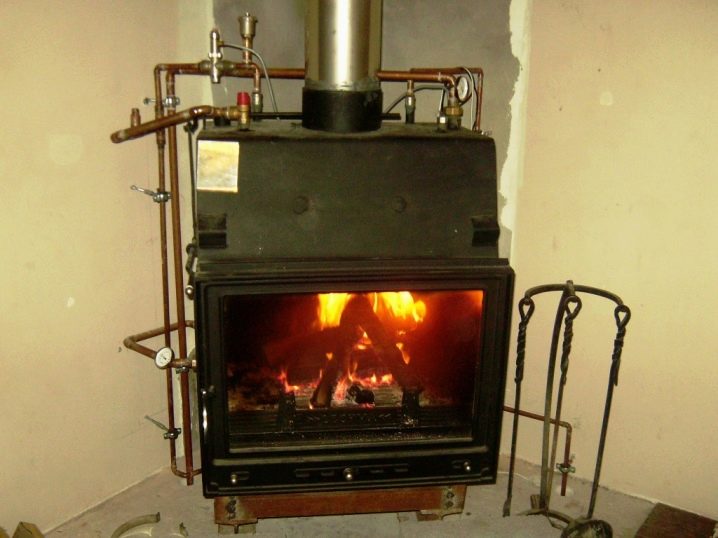
The heat exchanger is made at least 5 mm thick. It heats up quickly and spreads heat around the room. The fireplace and the water supply system are connected to it depending on how the entire heating system in the house is made. The volume of the coolant, at which the entire circuit will work efficiently, is 55-85 liters. The maximum area that can be heated using a fireplace with a water circuit is 230 cubic meters. The expansion tank is installed within 7-11% of the total volume of the heating circuit.
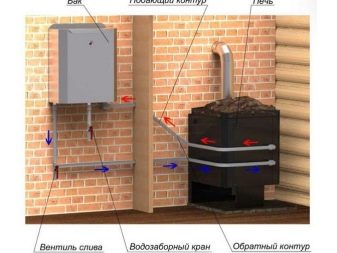
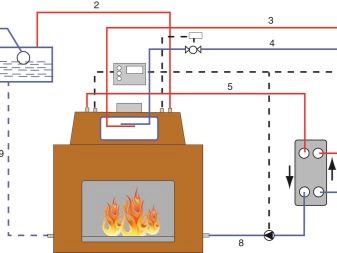
The firebox in a metal fireplace is made in two ways. It is made separately from the entire structure. A coil is inserted, and then connected to a common fireplace.
The second way is that the fireplace is made without a top cover. A chimney base (shirt) is inserted inside and fastened, and then the coil is fixed.
You can regulate the temperature in the fireplace using fuel (increase or decrease it) and using the blower flap.
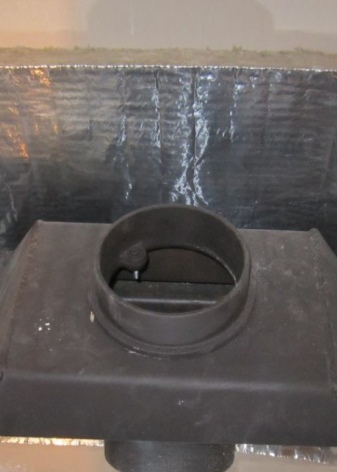
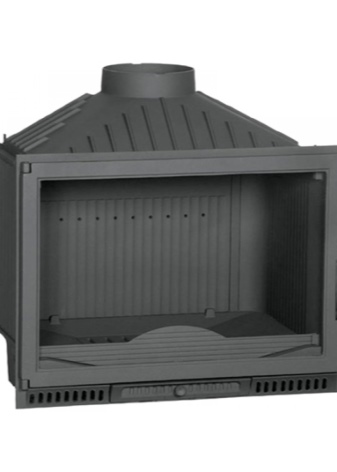
If the fireplace insert is located on the same level as the radiators, then an additional circulation pump is installed. It helps the movement of cold and hot water and prevents the coil from boiling. The efficiency of the fireplace when using a circulation pump increases significantly. The pump is placed in the basement of the house or utility rooms.
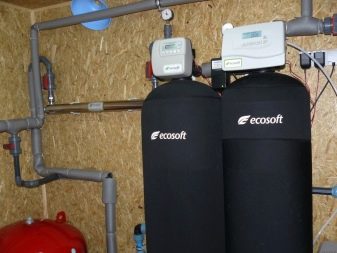

How to do it yourself?
For everyone who wants to make a fireplace in the house with their own hands, you should use the instructions for laying.The construction of such a structure must be carried out on a prepared foundation.
At the very beginning, a pit is prepared for pouring the foundation., it should be 15-20 centimeters wider than the foundation. Its depth should not be less than 50 centimeters. The foundation can be made from both concrete and brick. On the bottom, crushed stone is poured by 10-12 cm and tamped. After that, the formwork is made of wood and placed on the base. Then the foundation is poured and waited for it to dry. The corners are checked with a level and all irregularities are smoothed out, leveling the horizontal surface.
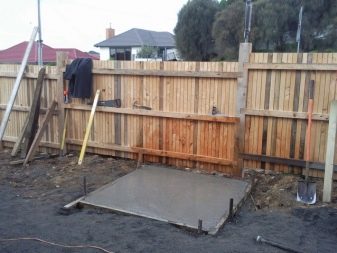

The poured foundation for reliable fixation is left for 5-7 days. The finished foundation should be 7-8 centimeters below floor level.
When the foundation is ready, it is covered with roofing material for waterproofing. A few days before laying, clay is soaked for mortar. After short intervals, add water to it and stir. The solution will be better if you add cement to it.
The first row of bricks is laid with edges and made solid. The subsequent rows are laid out flat.
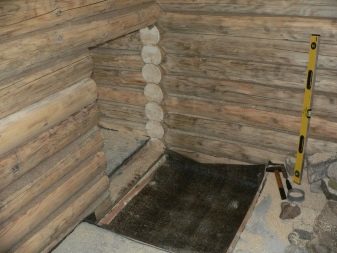

The metal box (blower) is fixed in a recess, ash will accumulate in it. The third row must necessarily close a part of this box. Next, lay the rows for the fireplace insert and grate. In the fifth row, protrusions are made forward. This is necessary in order to make overlaps. So that there are no deviations of the brick even by 1 mm, you need to check the angle of the masonry with a plumb line. You also need to check the order all the time.
Starting from the sixth row and up to the ninth, inclusive, lay out the firebox. Cast iron grates are laid on the bottom of the firebox. Their sizes are different, you need to select your own for each firebox.
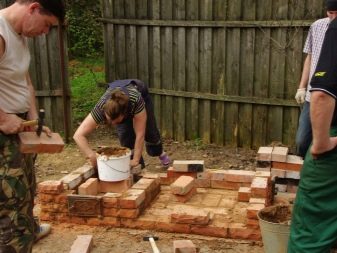
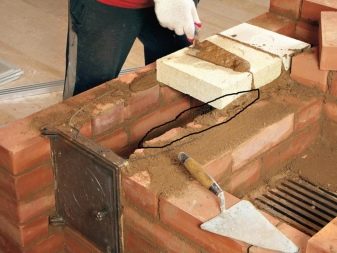
Facing bricks are not used for finishing the firebox. Brick cladding of a fireplace is made according to certain rules and the cost of such work is high.
After facing the fireplace insert, the doors are fastened up to half (in the case of a closed fireplace). Cast iron doors are immersed in brickwork using steel wire.
When the fireplace is open, the doors are not used. Laying continues up to row 20. A mirror base is installed between rows 13 and 19. The brick is placed vertically on a slope. From 20 to 21 rows, the bricks are pushed forward a little, this makes it possible to narrow the firebox. Rows 22 and 23 form a chimney tooth protruding 20 degrees.

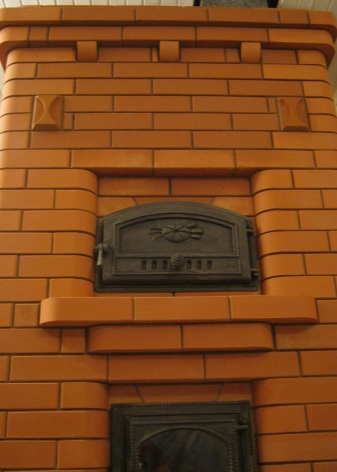
In the 24th and 25th rows, lay out the mantelpiece. Next, they move on to laying out the chimney. With its layout, the process ends, after which the facing is done.
A fireplace, unlike other devices, includes elements and parts that work interconnectedly. The operation of the entire system as a whole depends on how the individual elements work.
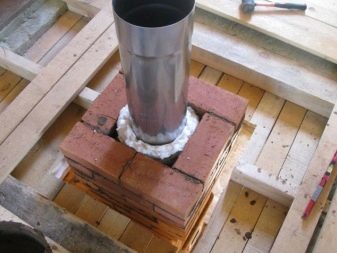
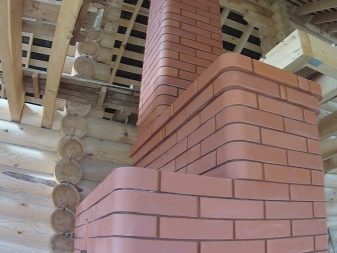
Advice
Fireplace masonry craftsmen give the following helpful tips:
- On the roof, at the exit of the chimney, an overlap (otter) should be placed. This element will protect against fire.
- When the hearth cannot be installed in one room due to the thickness of the walls, it can be laid out in adjacent rooms.
- The best option for a fireplace for a house in which they live for a long time is a wall-mounted one, its construction will not affect the layout of the building.
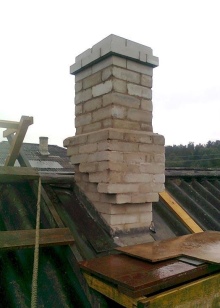

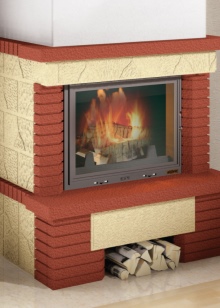
Beautiful examples in the interior
When choosing a structure, you need to pay attention to its shape.
- The asymmetrical corner fireplace will fit well into the interior of both large and small rooms.
- The classic version of the fireplace is an open red brick portal. It will look beautiful in a wooden house.
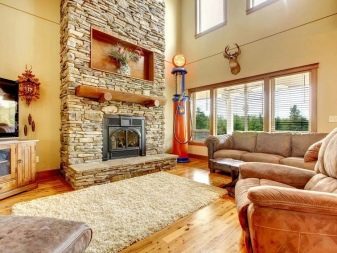
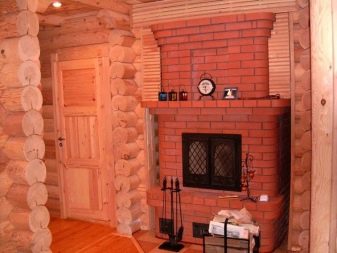
- In a house with a modern interior, it would be appropriate to place a structure in the Art Nouveau style.
- For owners of large living rooms, a fireplace decorated in the Baroque style is suitable. The portal in this style is decorated with stucco moldings with curls.
- For lovers of rustic style, the best would be a corner or wall portal, decorated with shells, sandstone.
- You need to choose a certain type of fireplace taking into account the engineering features of the house and the style of its design.
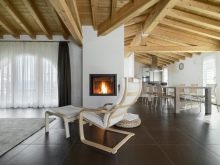
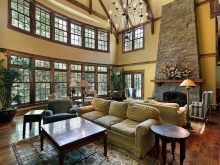
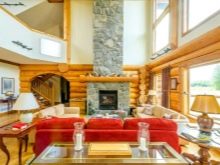
For information on how to make a brick fireplace with your own hands, see the next video.













The comment was sent successfully.